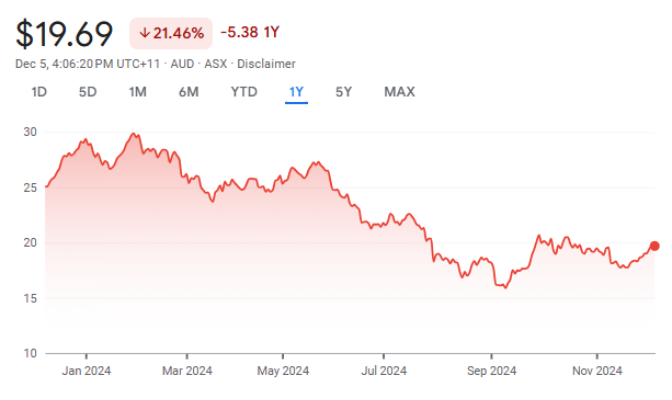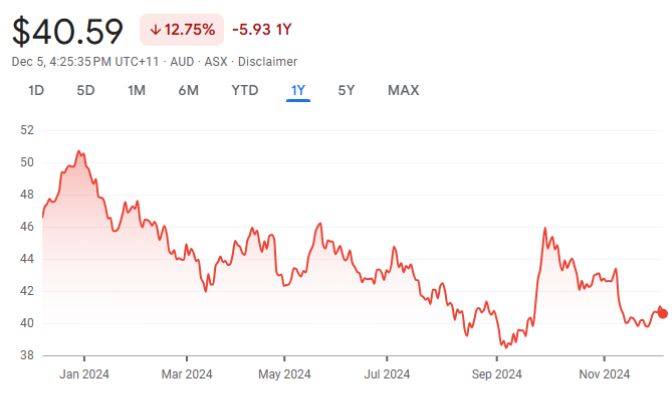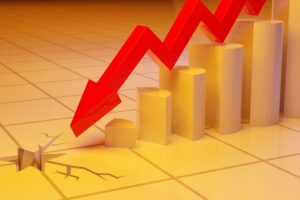What are Dividend Stocks?
Dividend stocks are shares of companies that distribute part of their profits back to investors in the form of cash payments. These dividends are usually paid semi-annually or annually on the ASX, though some firms operate quarterly cycles. For Australian investors, the appeal goes beyond just receiving income. Many dividends are fully franked, meaning shareholders also receive a tax credit for company tax already paid, boosting the after-tax value of the return. In our view, dividend stocks are not just about cash flow; they represent companies confident enough in their earnings power to reward shareholders on a consistent basis.
Why Do Companies Pay Dividends?
Dividends are often a reflection of a company’s strength and confidence in the future. They show that earnings are not only stable but also sufficient to share with investors after covering operating needs and growth opportunities. By paying dividends, businesses signal financial discipline, reward shareholder loyalty, and create a sense of reliability. For many investors, dividends represent more than just cash payments; they are a sign that the company has reached a level of maturity and can balance both growth ambitions and consistent returns.
Why Invest in ASX Dividend Stocks in Australia?

Steady Income Stream: Dividend stocks provide a regular stream of income, which can be particularly valuable for retirees who rely on investments to cover living expenses. For others, these payments act as an additional source of cash flow that can be saved, spent, or reinvested to grow wealth.
Franking credits – A unique feature of the Australian market is the franking system. When a company has already paid corporate tax on its profits, shareholders receive a tax credit with their dividend. This ensures investors aren’t taxed twice on the same income and can significantly increase the after-tax return on investment.

Resilience in downturns: Companies that have a track record of paying dividends are usually financially sound, with stable earnings and strong balance sheets. This stability can help cushion portfolios during volatile market conditions, offering a measure of confidence when growth-focused shares may be more vulnerable.

Compounding opportunities: Many companies offer Dividend Reinvestment Plans (DRPs), which allow investors to automatically reinvest dividends into additional shares. Over time, this creates a compounding effect, as investors receive dividends on an increasing number of shares, accelerating long-term portfolio growth.

Diversified exposure – Dividend-paying stocks span a wide range of industries, from banking and resources to healthcare and infrastructure. This means investors can access different parts of the economy while still focusing on income, reducing the risk of being overexposed to a single sector.
Investor confidence – A regular dividend often signals that management is confident about the company’s ongoing performance and cash flow. It builds trust with shareholders, as businesses that consistently distribute earnings are seen as disciplined, shareholder-friendly, and committed to delivering value.
Get the Latest Stock Market Insights for Free with
Stocks Down Under & Pitt Street Research
Join our newsletter and receive exclusive insights, market trends, investment tips, and updates delivered directly to your inbox. Don't miss out!
Dividend Stocks vs Dividend Funds
Dividend Stocks
When investors buy dividend-paying shares directly, they own a portion of the company itself. This gives them rights to dividends declared by the board and sometimes the ability to vote on important matters, such as electing directors or approving major business changes. Direct ownership also creates a tangible link between the investor and the company’s financial performance, making each dividend payment feel like a direct share of profits.
Dividend Funds
Dividend funds, whether exchange-traded funds (ETFs) or listed investment companies (LICs), pool together a basket of dividend-paying shares. This structure automatically spreads risk across different sectors and industries. If one company cuts its dividend, the impact is softened because income is still coming from others in the fund. Diversification provides peace of mind, especially for those who don’t want to rely on the performance of just a handful of companies.
3 Best Dividend Stocks ASX to Buy Now in September 2025

Fortescue Metals (ASX: FMG)
Fortescue Metals Group Ltd (ASX: FMG) stands out as one of the highest-yielding dividend stocks on the ASX, with a dividend yield of approximately 7.1% annually. For FY25, the company maintained its strong dividend payout, reflecting its dominant position in the global iron ore market. Fortescue has also achieved an impressive 5-year dividend growth rate of nearly 40%, showing its ability to consistently reward shareholders, even during volatile market conditions.

Commonwealth Bank (ASX: CBA)
Commonwealth Bank of Australia (ASX: CBA) is a cornerstone of the ASX, consistently regarded as a reliable choice for dividend investors. Known for its stability and solid financial performance, CBA has proven its resilience even during challenging economic cycles. For FY25, the bank declared a final dividend of A$2.60 per share, which is fully franked, with an ex-dividend date of 20 August 2025 and payment set for 29 September 2025. This brings its annual dividend yield to approximately 2.8%–3.0%, making it an attractive option for those seeking consistent income.

BHP (ASX: BHP)
BHP (ASX: BHP), one of the world’s largest resource companies, remains a top dividend stock due to its strong capital return policy and diversified commodity exposure. For FY25, BHP declared a final dividend of US$0.60 per share, with an ex-dividend date of 4 September 2025 and payment on 25 September 2025. This brings BHP’s dividend yield to approximately 4.5%–4.6%, which makes it an appealing choice for income-seeking investors looking for a balance of yield and growth.
3 Best Dividend Stocks ASX to Buy Now In 2025
How to Research Dividend Stocks
Look at the Dividend History: A company that has a history of consistently paying dividends is likely a safer bet than a company with an inconsistent payout history.
Examine the Payout Ratio: As mentioned earlier, a payout ratio can provide insights into a company's ability to maintain its dividend payments. A ratio that is too high can indicate that the company is not retaining enough earnings for future growth.
Assess the Company's Financial Health: Look at the company's balance sheet, income statement, and cash flow statement. Companies that are financially healthy are more likely to pay consistent dividends.
Understand the Company's Business: If the company operates in a volatile industry or one that is heavily impacted by economic cycles, its dividends and stock price might be less reliable.
Consider the Dividend Yield: While a high yield might be tempting, it's essential to understand why the company's dividend yield is high. In some cases, a high yield could indicate that the market believes the dividend payment is at risk.
How to Trade or Invest in ASX Dividend Shares
To trade or invest in ASX dividend shares, the first step is to open a brokerage account with an Australian or international platform that supports ASX trading. Once your account is set up and funded, you can begin selecting the dividend stocks that align with your investment goals. For dividend investors, it’s important to buy shares before the ex-dividend date to qualify for the next payout. After that, you can either hold onto the shares for income or reinvest dividends through Dividend Reinvestment Plans (DRPs), which allow you to automatically purchase more shares rather than receiving cash payouts. Tax considerations are also crucial, since dividends must be reported as income on your tax return, it’s important to track payments, especially if they come with franking credits. Over time, you can monitor the performance of your holdings and adjust your portfolio to ensure you’re meeting your income and growth objectives.
Are Dividend Stocks Worth It?
Dividend stocks are absolutely worth considering, particularly for investors seeking reliable income and long-term growth. They offer a consistent stream of income, which can be particularly valuable for retirees or those looking for cash flow without having to sell off assets. Moreover, the added benefit of franking credits makes dividend stocks especially attractive for Australian investors, as they reduce the tax burden on dividend income. However, it’s important to weigh the risk and reward. While dividend stocks tend to be more stable than high-growth stocks, they are not immune to market fluctuations, and dividend cuts can happen during tough economic times. Ultimately, dividend stocks are best suited for investors who value income consistency and prefer to invest in established, financially stable companies that prioritise shareholder returns.
FAQs on Investing in Dividend Stocks
Dividend shares refer to shares in a company that regularly pays dividends to its shareholders. These dividends are a portion of the company's profits that are distributed to the shareholders as a reward for their investment.
Our Blogs On Dividend Stocks ASX
ASX Dividends Are Shrinking — What Every Income Investor Needs to Know
For decades, Australian income-oriented investors have relied on the country’s share market to deliver reliable dividend streams — generous yields,…
Rejecting a takeover offer: Here are 6 ASX stocks that did and how it ended for them
Rejecting a takeover offer is a bold step for an ASX company to take. It is turning down sweet quick…
Activist investors: Here’s what you need to know about them and 4 famous Australian activists to watch out for
Hear the term ‘Activist investors’ and you might think of GetUp, the progressive activist group that forced Woolworths to hold…
Heavily indebted ASX stocks: Here’s how to tell when debt is a problem and 5 stocks we’re worried about
Let’s take a look at some of the most heavily indebted ASX stocks. Specifically, how to tell that they are…
Here are 5 Dividend Aristocrat stocks: Companies that have increased dividends for over 50 years consecutively!
Have you ever heard of a so-called Dividend Aristocrat? This term alludes to a company in the S&P 500 that…
ASX Dividends Are Shrinking: What Every Income Investor Needs to Know
In recent times, the outlook for Australian dividend investors has dramatically shifted. The ASX 200’s forward dividend yield is now…





